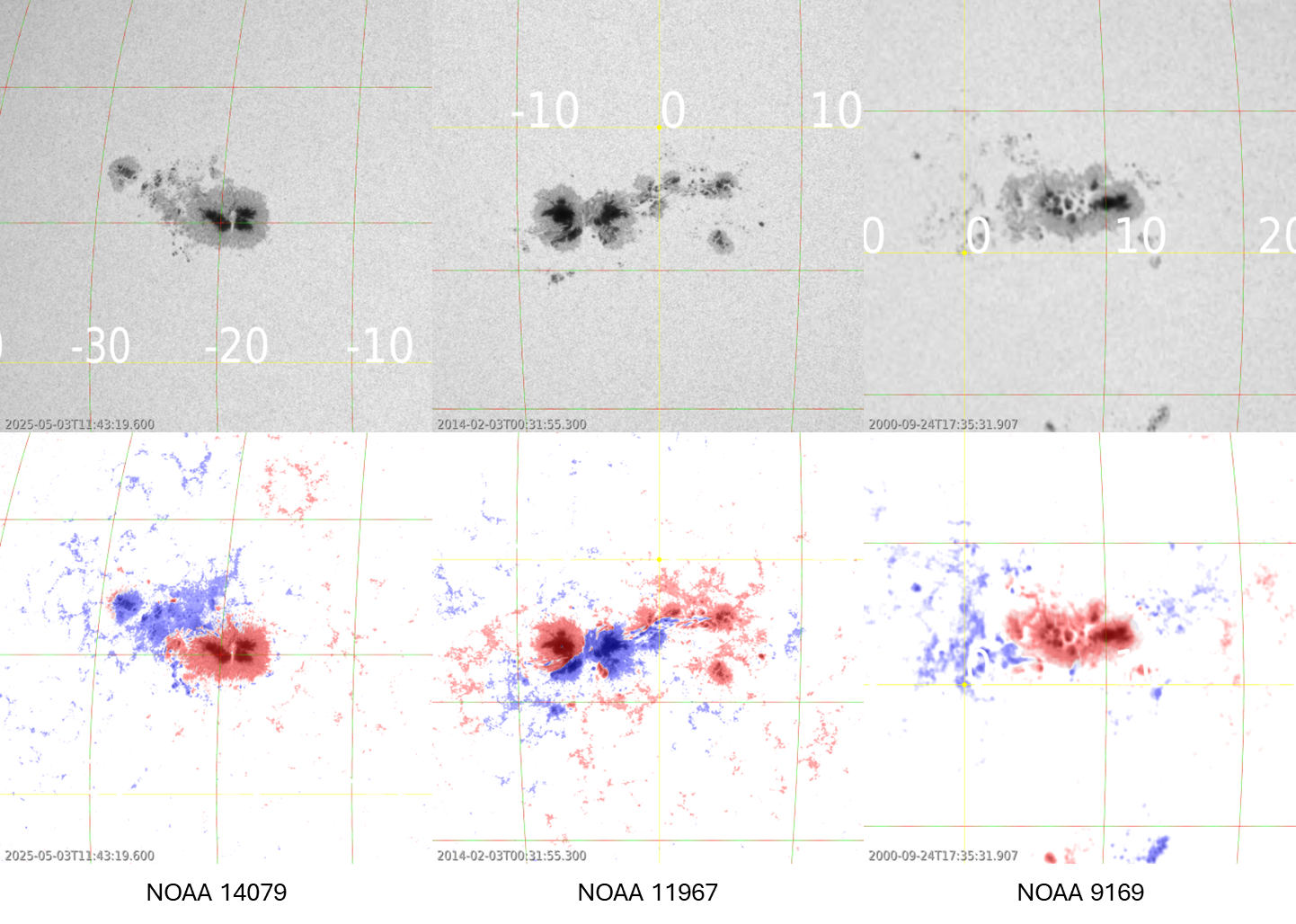NOAA 14079 rotated over the Sun's east limb on 28 April. It was the return of NOAA 14055 which was "born" on the solar disk just 3 weeks earlier and quickly became the source of numerous M-class flares. NOAA 14079 initially seemed to continue that tradition, with an M-class flare on both 29 and 30 April. But then it fell silent, producing only a small number of C-class flares during the subsequent days. This was quite surprizing, as it was certainly one of the larger and more complex sunspot groups of this solar cycle. NOAA/USAF calculated its area to be around 1200 MH. Here, "MH" is a millionth of a solar hemisphere, and the total surface area of the Earth corresponds to about 170 MH. As usual, the true sunspot area is about 40% higher than that reported by the NOAA/USAF network. For example SIDC/USET and ASSA (South Korea) reported it to be around 1650 MH. The differences are due to the type (drawing, image,...), the size of the solar disk, and the methodology used (automatic, squares, best-fitting ellipses,...). So, the sunspot area of NOAA 14079 was about 7 to 10 times that of the Earth's surface area. Using eclipse glasses, it was easily visible to the "naked eye" from 1 May onwards. The SDO/HMI imagery underneath shows NOAA 14079 in white light (left) and with a magnetogram overlaid (right), and cover the period from 1 to 5 May (UTC noon). The stills date from 3 May around 12:00UTC.
 |
 |
From the imagery above, it is clear that the main spot of NOAA 14079 is relatively symmetric, with a lack of strong magnetic delta structures (see the STCE SWx classification page). Some short-lived delta's were occasionally present in the middle portion's penumbra, but the few umbrae of opposite magnetic polarity were usually well separated, making interaction and thus strong flaring nearly impossible. Large but flare-inactive groups have been seen in the past. The imagery underneath (with grid squares of 10 by 10 degrees) shows white light images (top) and overlaid magnetograms (bottom) for NOAA 14079, NOAA 11967 (February 2014) and NOAA 9169 (September 2000). According to the NOAA archives, the latter was the largest region of this trio with an area close to 2000 MH. It had, just as NOAA 14079, no obvious delta structures and produced only 3 M-class flares and a single X1 flare. NOAA 11967 had about the same sunspot area as NOAA 14079, and produced 39 M-class flares. However, despite the group having a strong magnetic delta structure in its trailing sunspot, three quarters of the M-class flares were low-intensity events (M3 or less) and not a single (zero, nada) X-class flare was produced. It reminds space weather forecasters of another, exceptional situation, when NOAA 12192, the largest sunspot group of the previous solar cycle, produced numerous and strong X-class flares, none of them associated with any coronal mass ejection (CME) - see this STCE newsitem. More than 10 years later, peculiar cases like these perfectly illustrate there are still significant gaps in our understanding of the generation of solar flares and CMEs.






